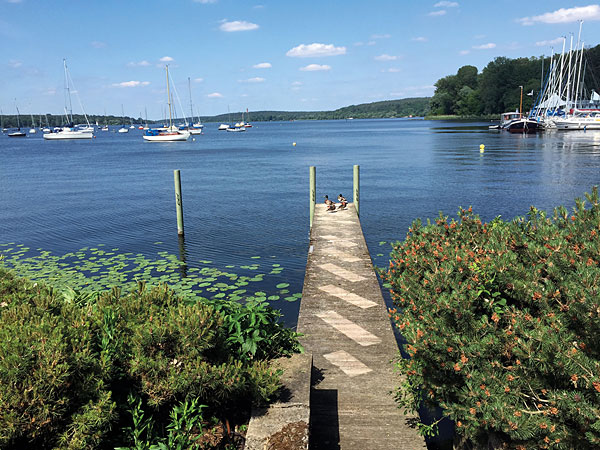Women Artists in Residence on the Island of Schwanenwerder, Berlin
Temporary Home – Space for Great Art
Women are underrepresented in art. Sculptor Franziska Seifert wants to change this and, together with her husband Tim Cordts, she established a charitable foundation to support female artists through a residency programme. In the house on Schwanenwerder at the Wannsee lake in Berlin female artists from all over the world can work undisturbed and rent-free for two to ten months and carry out projects dear to their hearts. What a fantastic opportunity …


What do you do with a house in a very exclusive location that you don't want to use yourself? Sculptor Franziska Seifert set up a residence for female artists in the house of her late mother.
What makes the house special is not only its new use but also its location: Schwanenwerder – Berlin's expensive island with a dark past. Industrialists, merchants and bankers lived here, many of them were of Jewish origin and were expelled after 1933. Thereafter, the island was firmly in the hands of the Nazi leadership. After 1945 American military men and the German publisher Axel Springer resided here.
The family of Franziska Seifert bought this former holiday home at the Klare Lanke after the Second World War. Up until today the island remains a place for Berliners with a vision.


The house offers far reaching views across the river Havel in the direction of Spandau. Franziska Seifert considers this an ideal place for an inspiring and creative work environment. “It's about time Schwanenwerder was opened up to a wider public.” To this end, she and her husband established a foundation that exclusively supports women in all areas of art.
Male Artists Push Themselves into the Limelight
Leonardo da Vinci, Dürer, Mozart, Rembrandt, Monet, Le Corbusier, Picasso, Richter – we know them all, don't we? But what about female painters, sculptors or musicians? Far fewer names come to mind. Why is that?
Women were first admitted to the Academy of Fine Arts in Munich in 1920. Before that, they were officially excluded from studying. Attending expensive private schools were their only option. Fanny Hensel (1805-47), née Mendelssohn Bartholdy, lagged behind her famous brother Felix Mendelssohn Bartholdy throughout her life, although she was also a gifted musician and composer herself. Her familiy prohibited Fanny from having a career and from publishing anything during her lifetime. For a long time, women had no place in art. Even today only a few women can assert themselves on the art market and establish a place in galleries and museums.